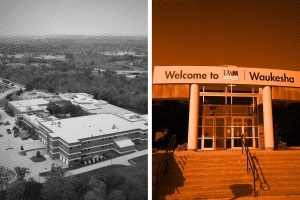As enrollment declines continue to challenge colleges and universities across the country, it has become increasingly important for educational institutions to rethink their campus spaces in order to adapt to changing needs.
Traditionally, college campuses have been designed to accommodate large numbers of students, with expansive libraries, crowded lecture halls, and bustling student centers. However, as the number of students enrolling in higher education institutions declines, these spaces are no longer as vital as they once were.
In response to this trend, colleges and universities are being forced to reevaluate and repurpose their campus spaces to better meet the needs of their current student population. This means considering how to make the most of limited resources and create a more efficient and effective learning environment.
One approach that institutions are taking is to repurpose existing spaces to better support student success. This might mean converting underutilized classrooms into study spaces, or transforming empty offices into collaborative work areas. By reassessing the use of their physical space, colleges and universities can ensure that every area of their campus is being utilized to its full potential.
Another consideration for colleges and universities facing declining enrollments is the need to create more flexible and adaptable spaces. As the needs of students evolve, so too must the spaces in which they learn and socialize. By designing spaces that can easily be reconfigured or repurposed, institutions can better meet the changing needs of their students and faculty.
Furthermore, colleges and universities must also consider the impact of technology on campus spaces. With online learning becoming increasingly popular, institutions must find ways to integrate technology into their physical spaces in order to provide a seamless and cohesive learning experience for students.
Overall, rethinking campus spaces in the face of declining enrollments requires colleges and universities to be innovative and forward-thinking. By repurposing existing spaces, creating flexible environments, and embracing technology, institutions can ensure that their campuses remain relevant and effective in the ever-changing landscape of higher education.



